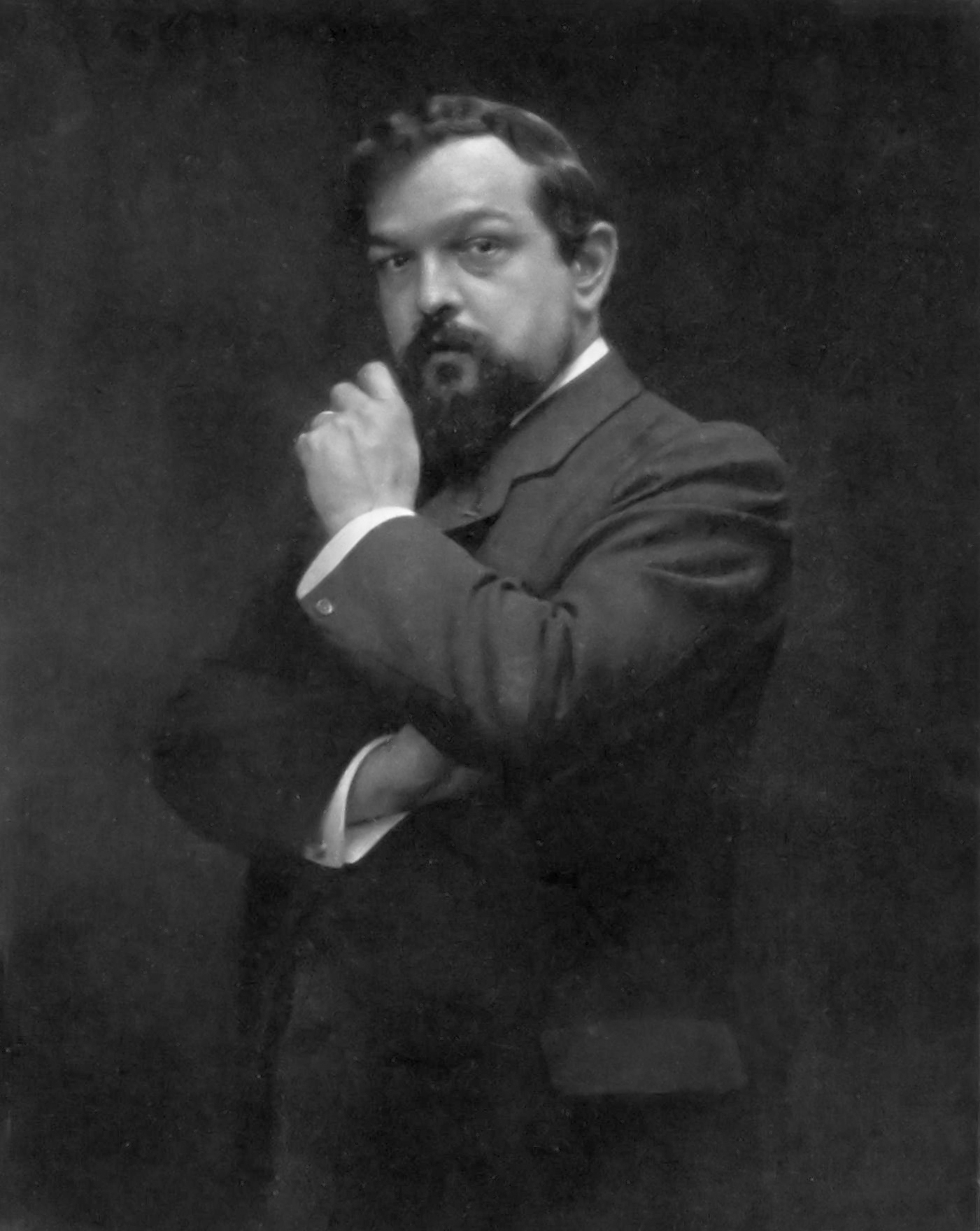Claude Debussy
The Romantic Period
Otto (Otto Wegener, 1849-1924), Public domain, via Wikimedia Commons
Claude Debussy was born in a suburb of Paris in 1862 and enrolled in the Paris Conservatoire at the age of 10, completing his studies in 1880. He began composing and working as a pianist, soon becoming involved in a seven-year affair with a married woman, Marie Vasnier, a soprano he often accompanied. He dedicated many of his early compositions to her. In 1884, he won the Prix de Rome (the same prize won by Berlioz and Bizet) and spent four years studying in Italy. Throughout his musical education, however, he resisted the constraints of traditional musical theory and form.
He returned to Paris in 1888, broke things off with Vasnier, and began a relationship with a woman named Gabrielle Dupont. The following year, Paris hosted the World Exposition, where Debussy heard a Javanese gamlean. From this point on, he began ignoring musical conventions and composing in a unique style, rising to prominence with his wandering, semi-tonal 1894 piece Prélude à l'après-midi d'un faune. Rather than being focused on clarity and structure, Debussy's meandering lack of form and non-traditional approach to harmony mirrored the anti-realist impressionism movement popular in art of the time.

Vincent van Gogh, Public domain, via Wikimedia Commons
Not everyone was a fan, however: Saint-Saëns criticized the piece as "lacking style, logic, and common sense." Debussy responded by attacking the elder composer's music as outdated, famously saying, "I have a horror of sentimentality and cannot forget that its name is Saint-Saëns."
In 1897, Debussy began a relationship with a singer named Thérèse Roger, which caused Gabrielle Dupont to attempt suicide and created a scandal in Paris. His relationship with Roger ended just two years later, when he married Rosalie Texier, but their marriage was unhappy and ended in a divorce in 1905. That same year, Debussy published several of his most famous compositions, including La Mer and Claire de Lune.
He married again in 1908 to a woman named Emma Bardac, and they had a daughter whom they creatively named Claude-Emma. He continued to write works for piano and orchestra, including the "Engulfed Cathedral," representing the French monastery of Mont Saint-Michél with medieval-style perfect intervals, a book of piano preludes, and music for ballets. However, his health began to deteriorate around 1914, he was diagnosed with rectal cancer, and passed away in the spring 1918. He could not have a public funeral, because Paris was under bombardment by the final German offensive push of World War I.
Debussy summed up the impressionist attitude to music in 1900, saying, "It is not necessary for music to make people think; it would be enough if it made them listen."
